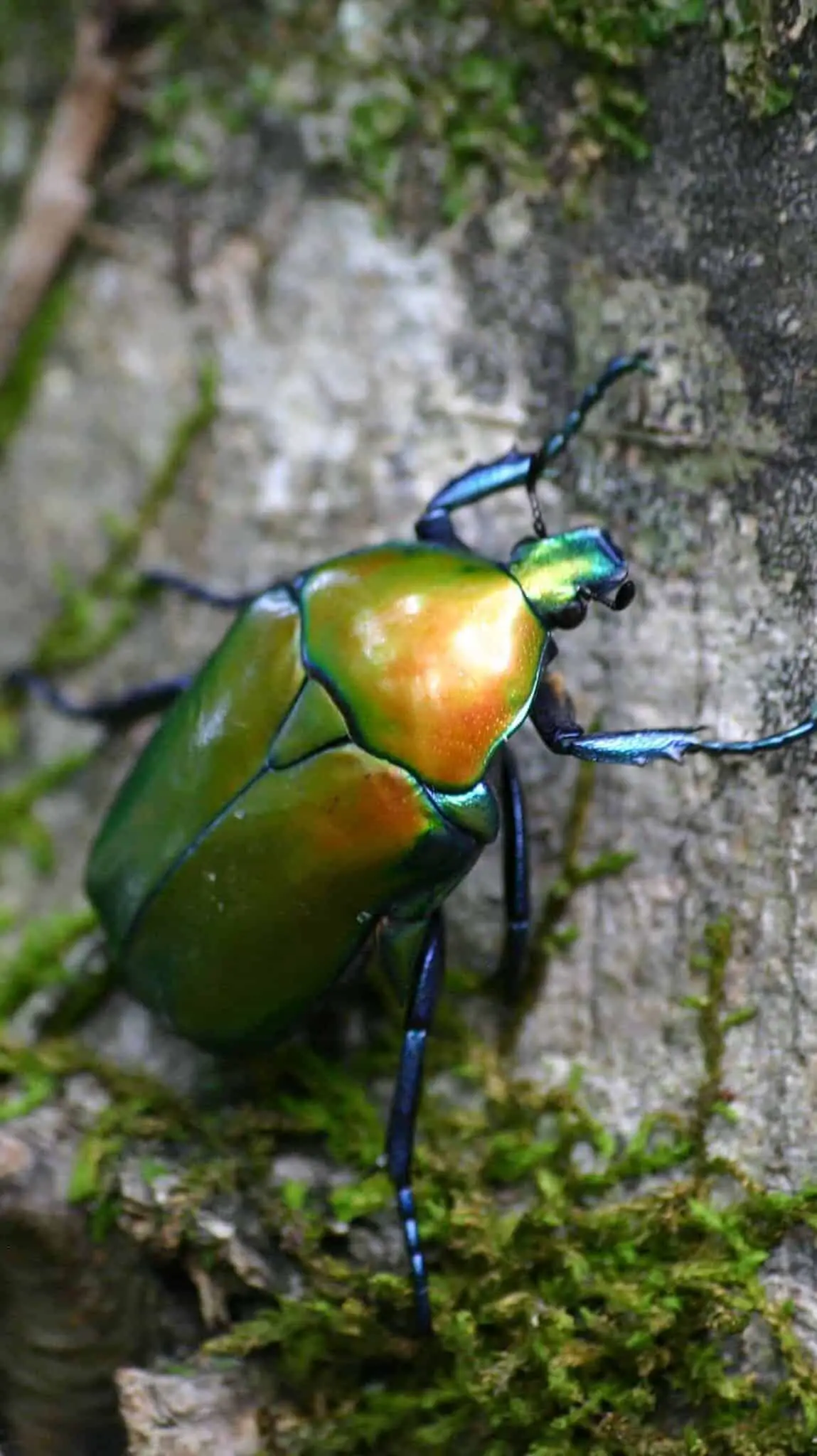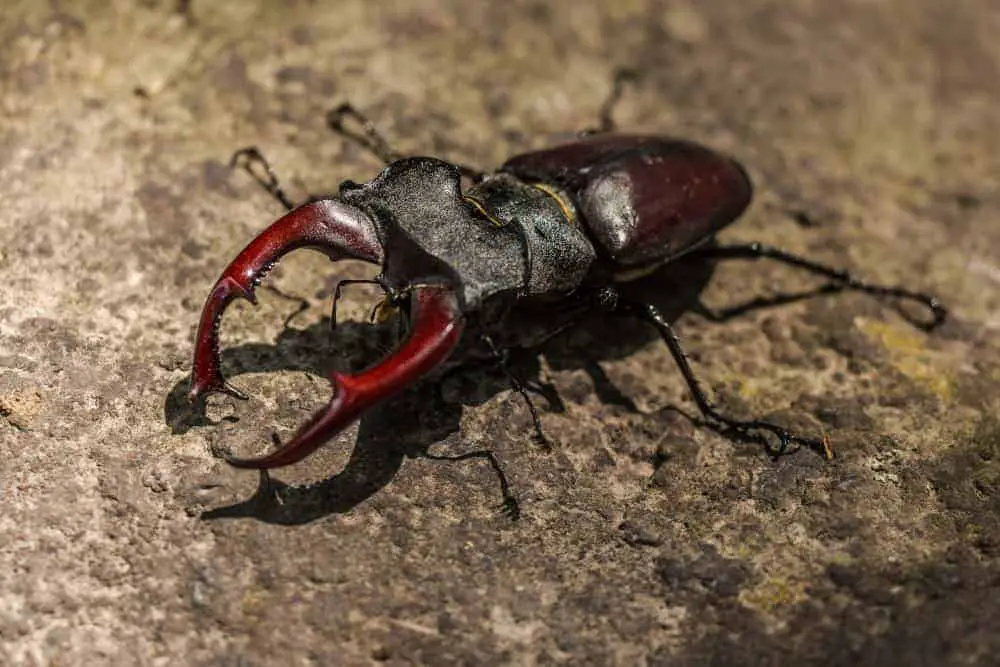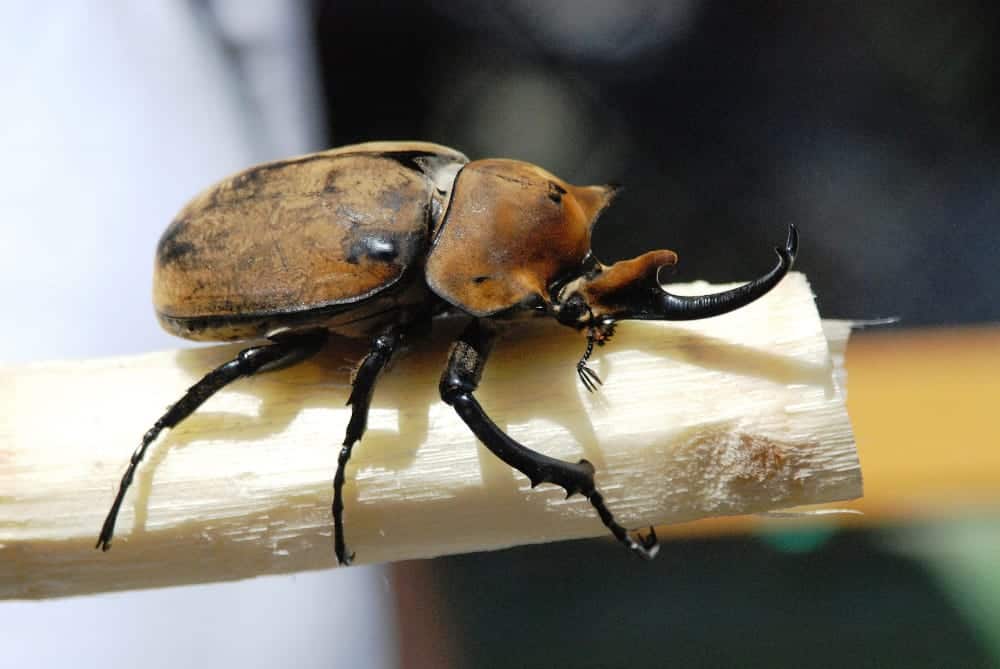Beetles are the most diverse and widespread group of the animal kingdom. Beetles with around 400.000 different species constitute almost 40% of the insect species and 25% of all known animals in the world.
Besides the number of beetles, they have a wide diversity of colours and shapes which make them very fascinating and exciting to see. No wonder that many species of beetles are kept as pets. Generally, they are pretty easy to keep and with proper preparation also relatively easy to breed.
On this page, we will give you an introduction in the biology of beetles, which contain information about their morphology, their life-cycle and background information on their natural habitat and behaviour.

Morphology
Beetles have that typical 3-part body plan of insects: Head, thorax and abdomen shelled into an exoskeleton, except that with most species of beetles they are much more fused together. What beetles distinguish from many other insects is their wings. Not that other insects don’t have wings, but beetles have their membranous hind wings covered by rigid and hard front wings. The front wings protect the more fragile rear wings that are used to fly.
They have typically six legs, two antennae, compound eyes and mandibles. The beetle’s mouthpart is similar to that of grasshoppers. The mandibles are large and strong and used to grasp, crush, cut food or used as a defence mechanism.

Camouflage, colouration and defence mechanism
Many beetles are a food source for other animals. But beetles have developed ways to outsmart their predators. Many species have developed camouflage and different defence mechanisms, which make them fascinating in their appearance.
Camouflage is rather widespread among beetles but is most common with species that feed on wood and plant vegetation. Not only colours are adapted to blend into the environment, but also the shapes of their body make sure that some beetles don’t stand out when sitting on a tree or other vegetations.
Other beetles are just the opposite and are brightly coloured. Often they have the colouration that mimics other species that are toxic or poisonous. This specific kind of ‘camouflage’ is called mimicry. Not only do they mimicry the appearance of other animals, but often mimicry the behaviour of these animals as well. Bright or contrasting colouration to flag or warn predators that you are not worth attacking or eating is called aposematism.
Beetles are famous by the large developed and strong mandibles or heavily spines or horns. These beetle species are able to attack and fight off predators, although they are also used to impress females. A good example is the rhinoceros and longhorn beetles.
Some beetles have developed a chemical defence mechanism to avoid being attacked or eaten. Most of these beetle species have chemicals that stink, which make them less attractive to be consumed or approached; however, some even spray it on its attacker. Other beetles, like the bombardier beetle, have chemicals that are used to hurt or scare off predators.

The life-cycle
The life-cycle of beetles exist of four stages: eggs, instars or larvae, pupae and imago (adult). Most of them undergo a complete metamorphosis. Many beetles are sexually dimorphic, and you can determine males and females by their looks and colours. Males have often enlarged mandibles, horns or other appendages to impress females or defeat competition of other males.
Eggs
Virtually all beetles lay eggs, with a very few exceptions of beetles that are ovoviviparous — in which the eggs live in the female until they hatch. Typically a female lay from several dozens to several thousand eggs during her life. The eggs are laid inside or nearby a valuable food source so that the larvae can immediately start eating and grow.
Larvae
From the eggs, the larvae emerge. Larvae have a completely different look than adults. The appearance is more to compare with that of caterpillars. Mealworms and super worms, which are often used as feeder insects, are the larvae stadium of beetles as well. They are worm-shaped and move the same as caterpillars do. During the larvae stage, it eats voraciously to increase in growth. All larvae go through several stages and between every successive instar stage it moults. When at the final instar stage it will turn into a pupa.
Pupae
Beetle larvae pupate. During the pupae stage, the beetle doesn’t eat and doesn’t move (apart from some wiggling moves). Within this stage, it only transforms into the adult form. From the pupae emerge a fully formed sexual mature adult beetle.
Adults
Depending on the species, adults have a variable lifespan. Some adult beetles will live only for a few weeks, and some live for years. The total lifespan, however, can be dramatically longer. Some beetles are known to live for over 50 years. Although, much of this time the beetle will stay in the larvae or pupae stage, not as adult form. Adult beetles are also called imago.

Habitat distribution
We slightly mentioned it at the beginning, but because there are some many beetles they colonized almost every place on this planet. They live on every continent, except Antarctica (and in the sea) and can be found in every habitat: deserts, mountains, caves, tropics, meadows, temperate forests, freshwater, lakes, agriculture and homes (as pests). Because beetles are so good at adapting to their environment, you can find them everywhere.
Food habits
You can almost say that the beetle’s food habits are as diverse as the number of beetles. Many beetles eat on wood, fungi and plant materials. Beetles also play an essential role in the ecosystem, such as breaking down animal or plant debris. Some other beetles eat other vertebrates and hunt for them.
Commonly the larvae live inside or nearby its food source. Larvae are not developed to travel distances and only move through their food (think of inside substrate, inside fruits, inside seeds, inside plants, inside trees or dead animals). The food source of larvae is very different from that of adults. Adults disperse in search of food sources elsewhere and try to find a mate to reproduce. Beetles commonly eat nectar, fruits, specific plant material and insects. They lay their eggs by the food source for the larvae.

Further reading
Currently, we are developing a general care guide on how to keep and care for beetles in captivity. Come back soon to find more information to keep beetles as a pet!
Similar bugs to beetles
The diversity, bizarre and fascinating shapes and colours of beetles make them really amazing. They are not many animals that are likewise successful as beetles. If you like beetles, you’ll probably be also interested in the bugs below. Find out more by clicking on one of the links.
Share this page!
